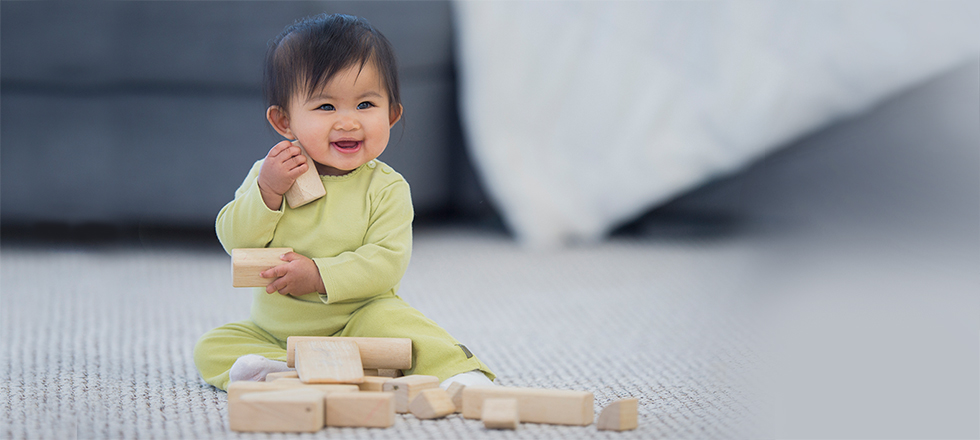Lately we’ve had so many families going through sickness and illness with their children. I’ve received countless emails and facebook messages about different kids who have been ill and what to do about it. So I’m going to cover some of the top issues in the next 2 or 3 blog posts to give you (parents) some tips and ideas on things to try with your children to help them get through their health struggles. So lets cover one of the most common issues in childhood: Fever.
One of the scariest things as a new parent is to pick up your baby (who is by this point super fussy and not nursing correctly or not sleeping) and they feel like they’re on fire. Not knowing what to do can be even scarier in this situation, so let’s talk about things you can do as a parent to relieve you child’s suffering.
Before we really dig into what to do at home to help with a fever, what exactly is a fever anyway?? I mean, we need to know what exactly is going on to understand when or if we need to do something about it, right? Well, a fever is when the body recognizes there are foreign invaders that have made it into your system and it raises the internal temperature of the body (past 98.6 deg) to try and kill off whatever you have contracted. This temperature increase is regulated by the Hypothalamus, a part of the brain that acts like the thermostat. As your child’s temperature starts to rise, they will feel colder initially because the body pulls all the blood from the skin and pushes it back into the body to use to increase the core temperature and they will get the shakes because the body is using the muscles to create yet more heat on the inside.
So what temperatures are considered to be feverish and what levels are considered too high?? For children, a temperature of 100-102 degrees (Fahrenheit) is considered a “low grade” fever. A temp of 102-104 is considered “moderate”. Temperatures of 104-106 are considered “high” and anything over 106 is considered “severe”. The incredible thing about the body though is that I’ve seen young children run a consistent fever of 107 and not even act like they’re sick!! This one particular little girl was running around my office playing like they normally do and wasn’t fussy at all and had been running 105-107 for a couple days. Now, that’s not to say that your child will do that, but the point is that instead of looking at and worrying about a specific number when it comes to the fever…you need to look at your child and pay attention to their physical symptoms and their reaction to the fever to see what, if anything, you need to do about it.
What should I look for?
There are several signs to look for when your child isn’t feeling well that clue you in to the fact that they may not be handling it as well as they should and you need to seek medical help. The first thing to pay attention to is their energy levels. Now granted, when a child is sick, they usually aren’t as active as they usually are for sure, but you want to look for them to be really lethargic. Lethargic isn’t just tired or lazy, it is a more severe fatigue where your child doesn’t even want to get up and won’t do anything at all during the day but lay there. Your child should be able to get up and move around when you want them to, even if they would rather sleep or lay down because of the illness. Another thing to pay attention to, especially on infants is how responsive they are. If your baby is still responding to your cues and will still focus on you and pay attention to you, then they’re still doing pretty well. If they get to the point that they can’t even keep their eyes on you and just stare off in the distance and you can’t get their attention at all, then you need to start working on bringing their fever down or calling your doctor to get them in. Fever also has a tendency to cause you to dehydrate quicker, so you need to consistently be giving your child fluids and paying attention to how many wet diapers you get that day. It’s ok if they don’t eat as much that day (that’s perfectly normal), but they MUST keep drinking/nursing to keep some fluids down so they don’t dehydrate. If their lips start really cracking and they get really dry feeling (over their skin), you need to kick into overdrive on the fluids. Part of the trips to the E.R. of children we see in the office is because they didn’t get enough fluids down them and they had to take them in for an I.V. to keep them from dehydrating. So if you’ll keep on that (even a sip ever so often) then they’ll do much better.
As long as your child isn’t showing any of these signs/symptoms, even if they have a fever, then they should be fine to wait it out. Remember, that fever is killing off whatever your child’s body is fighting at the time so if you stop the fever early, you’re not allowing the body to finish what it started. By stopping a fever early you could prolong an illness and they could stay sick longer as their body struggles to be rid of the bacteria or virus.

What can I do if it gets too high?
If your child’s fever is getting to a point you as a parent aren’t comfortable with, then there are a few things you can try to bring the fever down.
1. Garlic Enema: This works really well for young children or babies if their fever is getting too high for comfort and you need to bring it down quickly. What you want to do is boil 2-3 cloves of garlic with either a pregnancy tea or mother’s milk tea (full of nutrients and gentle so not hard on little bodies) in 8 oz of water. Let it steep for a couple minutes and bring it down to a comfortable temperature (warm but not hot at all) and then use either an enema bag (can purchase at the pharmacy) or with young children you can use a bulb syringe and insert into the rectum. Do this either over the sink or in the bathtub so that as it runs back out or if they need to use the bathroom it will go into the tub and not onto your bed! The colon is a place of enormous amounts of blood vessels. By introducing nutrition into this area, with fluids, you will help them absorb the liquid even without drinking it and help with their fluid levels.
2. Calcium: Parents usually use Tylenol to bring fevers down in their children, but you have to be careful using it very often because any medication is hard on your child’s liver. One supplement that helps to bring a fever down naturally is Calcium. I like to use Calcium Lactate from Standard Process (we carry this and you can get it at Sunflower Shoppe) because it is vegetarian based and works really well. But any calcium will help to regulate the fever.
3.Egg Whites: Another remedy we’ve used and been told of is using egg whites. You dip your child’s feet in the egg whites and then cover them with socks and let the egg whites stay on the feet. This helps to pull the fever toward their feet and relieve pressure on the rest of their body.
4. Cool/Tepid bath: I remember my mom used to put us in a cold bath if our fever got too high. You don’t want it to be too cold because the fever could get worse as a reflex the body does thinking you’re too cold. It should be tepid or a little less than room temperature. This will help to bring the temperature down and help to balance the body out.
If at all possible you want to let the fever run it’s course and encourage it to do it’s job. Covering your child up to allow the fever to work faster usually works really well. If they start sweating profusely then their fever is probably breaking. The fever can “break” several times before they’re totally over it so don’t worry if the fever comes back after they initially break it. If your child’s fever lasts for more than a few days, it is wise to seek medical attention.
What about seizures?!?
There is a phenomenon that happens when the body’s temperature gets really high where the body will cause seizures in order to bring the temperature back into a normal range. Although really scary, febrile seizures have never been shown to cause any negative side effects in children (check this out here). About 3% of children experience febrile seizures and interestingly it usually runs in families. If your child has one, don’t panic, but loosen any tight clothing, do NOT try to force anything in their mouth, and move anything that might injure them away from them. This will look like a grand mal seizure and could last for a few minutes. After the seizure, your child may be drowsy and tired acting, this is totally normal. There are no medical treatments for this so if or when this happens, just work to bring the fever down and keep fluids in them.
The worst feeling in the world is when your child is sick and doesn’t feel good. But hang in there!! The body is created perfectly and can handle much more than you think and they WILL get better.
Dr. JB
